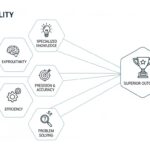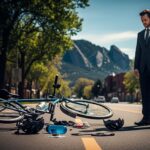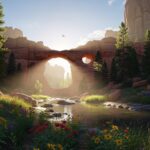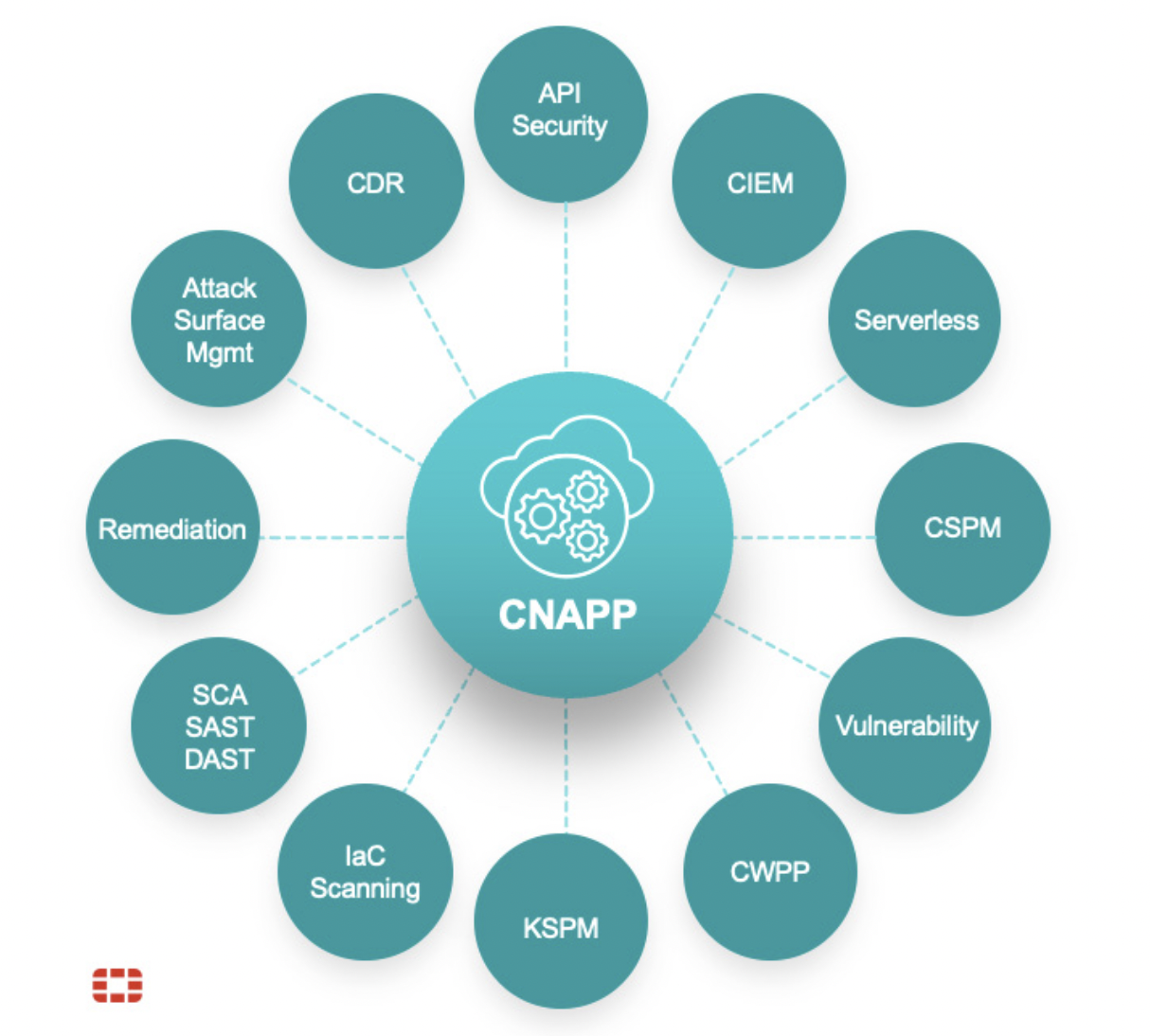Jennifer Chen-Su Huang
Here’s a look into her work:
Has writing for Venison influenced your art in any way?
I’m not sure that it has especially influenced my art making, but being a part of Venison has shown me the importance of staying connected with other artists and encouraging one another to further their practice — because it’s easy to be disheartened in this field.
My interest in dismantling the hierarchy between craft and art are connected to conversations in feminism. I’m currently studying both Western and Eastern cultural definitions of “feminine” and how contemporary literary and visual artists have reclaimed these terms. I’ve been referring to cultural theorists and feminists, Luce Irigaray and Julia Kristeva. I’m discovering that my art making is motivated by lived experience and is autobiographical in the sense that I am reconsidering the heavily patriarchal Christian and Confucian values I was raised in.When you take a look at her work, you can’t help but notice the color palette immediately, which I asked her about.
“I often gravitate towards muted pastel colors because I find them to be non-threatening, humble, childish, and playful. I also tend to use flesh tones in general, I think, because of my interest in the body and its futility. I’m drawn to the human body as a humble organism.More recently, I’ve been using bright pinks as well because it is associated with being low brow or overly saccharine. It’s unsophisticated and also maybe a bit repulsive, like pepto-bismol. I see a relationship between my use of pink and my interest in socially ascribed feminine traits — wet, dark, fragmented, negative, etc. I want to uplift pink’s status by subverting the negative implications associated with femininity.”
Danielle Schlunegger
I wanted to get involved with Venison after Amber and I became friends and I got to know all the people working on the magazine. Everyone involved creates such a supportive community for each other and I wanted to help contribute and be involved in that support system.You were interviewed by Amber in the Autumn of 2014. What is it like going from being interviewee to interviewer?
Being interviewed by Venison was a huge confidence boost. The idea that someone liked my work enough to want to put the time into promoting me was very validating and it opened a lot of doors for me. Getting to interview other artists has been a really valuable networking tool and a way for me to promote the artwork I admire while giving other artists the same kind of validation.
I work with my hands pretty much all day, even though I do have to have a day job. I work in a wood shop making panels and stretcher bars for other artists. My day job has opened up a lot of great connections and friendships. I like to think of my self as a full time artist, just with many different jobs: Having day job to pay for my studio/supplies/ groceries etc, making the actual art, promoting my art and upcoming shows, looking and applying for opportunities, and maintaining a good family and friend life outside of making art.
I think having a group of friends who are artists who push each other to keep making art is really something to hold on to. Have a good website that is easy to navigate–more people will see an image of your work online than they will in person. I’m also always a fan of keeping business cards on you all the time. You never know when you’ll need them.
Holiday Spotlight: Amber Imrie-Situnayake & Adriana Villagran
In light of the Holiday Season, a time for friends and family to come together, we thought it was important for our readers to get to know who we are. Over the next few weeks, we’ll be introducing to you the creators and contributors of Venison Magazine: the art publication run by artists for artists.
Amber Imrie-Situnayake
What inspired you to launch Venison Magazine?
So this answer comes in a few parts. This is where I was coming from mentally: As a beginning artist, I had just left undergrad and I was finding it incredibly hard to “get out there and meet people.” I was part of an art collective that I founded while still in school, but I was finding it difficult to meet new artists and bring more people on board. I just felt awkward and insincere in all my actions. I was intimidated by art openings. I grew up really poor and uncultured, so the gallery scene was about as far removed from a BBQ in Arkansas as you could get. Simply, I felt out of my element.
I was in the UK at a gallery space in Birmingham with my in-laws when I went into the gift shop area to find a magazine I could read on the plane home and I couldn’t find anything that I was willing to buy. Most of the magazines were 70-90% advertising, and most of the work was outdated and safe. I couldn’t find anything that was showing the kind of work that was even similar to the space I was standing in. So I thought, let’s start a magazine!
What kind of affect does writing about art have on your own creative processes?
This is such a great question, because it has a huge impact on my own work. It connects me with larger dialog about art, themes, and movements. Writing about art has made my work more relatable to others and less (directly) personal. Since I work as a scout for the magazine. I look at A LOT of artist websites, so my own site has vastly improved and become more user friendly. It’s also given me a whole new perspective on the jurying process which has made my own rejections easier to swallow. The writing and editing aspect has improved my own writing. If you told my high school english teacher that I was working as an editor–she would bark with laughter. After I dropped out of high school, I asked her for a letter of recommendation for a job at McDonalds, she said “I’ll have to tell them that you are bad at writing.” Her opinion of me was astoundingly low.
As a self-promoter, I like having the magazine; it relaxes the situation and allows us to have a real connection. Some of the relationships I’ve developed have grown into shows of my own work, while others haven’t, but I have good relationships with a lot of spaces which is most important. I’ve also gained great interpersonal skills. Gallery openings and meeting curators and directors has become fun. Instead of freezing up and having no idea what to say, I have a million questions and am able to show the genuine interest I’ve always had. Now people don’t assume I’m just another artist out to promote myself. Instead, I can be a person of press who is interested in what the organization is doing. That way there isn’t so much pressure to promote myself. I also find that if I introduce myself as both an editor and artist, it puts the curator or gallery owner at ease. You can sense them tense up when they think they are being hunted down by an artist interested in their space.
As a fiber and installation artist, you create large scaled, interactive works. Your most recent project, “Nature Suit” falls within that realm but brings new light to installation art. What were your driving forces for this project?
So, I grew up off-the-grid in Newton County Arkansas. We lived over an hour’s drive from the closest town. I didn’t go to school, we didn’t have much money, and I spent most my time in the woods by myself. Bugs and bug bites were a normal everyday aspect of life. I have large scars on both my knees from skinning them, and countless “marks of adventure” across my body. I never thought that my life was in anyway “cool” but rather, I was made fun of for being tomboyish and dirty. Now, I live in the Bay Area, where it is trendy to go hiking and be outdoors. Here, Hipsters & Yippies take hikes in their 200 dollar boots and Northface pants holding their hiking poles.
They walk along groomed trails that wind through groves not 30 yards from civilization. Marine county, one of the wealthiest places, is also leading in outdoor living. The products marketed to them: sweat wicking ultra-light weight jackets, hiking poles, ‘Fresh’ scent bug sprays, 1,000 dollars a night “rustic glamping trip.”
It’s so ridiculous how idolized an “authentic” interaction with nature has become and how far from “authentic” these trips and products make us from the reality of actually being in nature. So, that is the Nature Suit—-the next step to making a product substitute for the “authentic adventure.” A way to look like you’ve had adventures in nature without the hassle of going outdoors. It also highlights the aspects of being in nature that people try to avoid through buying all these products. As if bug bites and scars are the cool factor in our outdoor living trend.
Adriana Villagran
My initial question is often, why and do you enjoy it? When I asked Adriana this, she mentioned she loved being introduced to artists. Artists she may not have been able to meet if it weren’t for the Venison connection–or community—being built. She stated, “The most exciting part is finding artists across the globe struggling with the same existential questions that I am. It’s very comforting, and quite an inspiration to keep moving forward. “
As Lead editor, I can imagine you’ve reviewed a ton of art! What do you find most important when it comes to interacting with fellow artists?
I would say the mode of dialogue is most important. That is, how I am interacting with the artist: is it a digital or face-to-face conversation. The personal in-studio conversations are joyfully awkward and ultimately richer than a digital conversation.
That is of course to be expected. You tend to get more of a grasp of what the artist’s work is about because you can see it and smell it and you can ask questions right on the spot. Most of the interactions I have through Venison are digital though. We live in digital world now, that is the reality.
What’s great about these type of interactions is that the artist has the time to reflect and put their best foot forward. They can take a breath and not stress out about saying the right thing at the right moment. It gives them an opportunity to really reflect and see things through another artist’s eyes. I think that is a good moment for them, a moment for growth. So ultimately the mode of conversation decides the kind of interaction I have with each artist.
I think podcasts are going to be a thing in the near future which is a whole other beast. I’m excited to see how that turns out
It’s actually a very clear moment that I started focusing on this subject matter. It was in late 2013 that I started working in a not-so-nice part of San Francisco that I really started to feel the burden of being a women in an urban environment. Burden is really not the right word for it. It is a much more complicated feeling than a single word can describe. But at that moment in my life, which was (and is) smack in the middle of my young naive adulthood, burden is the best word to describe what I was feeling. Here I was 23 years old and I became aware that a lot of my identity as a women had been force-fed to me by an overwhelmingly male perspective. This realization started to permeate into my art because it seemed like it was the only thing I had going that was really worth investigating. Two years later and my work is barely scratching the surface on such complex perceptions of women. Recently I have begun to really delve into women’s magazines as a source of inspiration as they are so brilliantly laid out to manipulate the reader. They are jewels of inspiration for my work, the question now is how do I manipulate the imagery to say something more meaningful and bite back a bit. That is the really
Laura Bernard – #venmag Feature/ Find
Venison Magazine finally has it’s own Instagram!!! For the last two year all of us behind the scenes: found and searched for artists through our own instagram accounts. (@amberimrie, @adrimakesart, @zishery) Now, we have one hub @ven.mag , for finding and featuring artists. This long over due move has led us to an exciting new “competition/ application”- #venmag and Laura Bernard was our first pick! If your an maker, creator, art space, collective, and you feel like you fit the Venison mission, #venmag to enter to grab our attention to the awesomeness that you do.
Tell me a little about your work and how you got started as an illustrator?
So I’ve always been an illustrator really. I was the kid at the back of the classroom doodling on the fronts, backs and insides of my Math book. Its been a thing that I’ve felt I’ve always had to do. Although through school I kept my creativity to myself until I discovered illustration in my final two years at high school and fell in love with the art world.
Did you attend university, if so where and what did you major in?
I have just completed my third year specializing in Illustration at Massey University in Wellington and plan to finish my degree in the near future at at a University in Melbourne. I have also done 6 months in Textile Design which is something else I am interested in.
What are some of the recurring themes or imagery and their significants?
Some recurring imagery in my works are motifs of nature; the outdoors, flora, bugs, animals and floral patterns – there are a lots of water related pieces, even though I hate the water!
I like to paint a lot of conceptual/ surreal themes and most of the time they evolve around things like intra-personal connections, or I suppose being alone too. Not loneliness, I don’t like that word, but just being by yourself. Being a creative introvert myself, I’ve dealt with lots of misconceptions and assumptions surrounding the word ‘introvert’ from the people around me. I think this is something that definitely seems to come through in my work.
Why do you hate water?
I hate water because my dad loves it. He made me go on many boat trips when I just wanted to be on land! Solid reliable ground. To make things worse, when he realized that I wasn’t so keen on water, he signed me up to a week long sailing course because “I must try it myself before I made up my mind” (even though my mind was made up!). I hated it more than almost anything. I do love underwater sea life and visual concepts including water but its not my thing (sorry Dad!).
Tell me about the titles for your work?
All of my personal works do have titles, although commissions are usually just “Commission for ____”
The title always relates to the works, even if conceptually or personally.
Your pieces seem like part of a story, do you see them as little series or interconnected in some way?
I think that all of my pieces do have a connection, as I do like them to be consistent and coherent as one body of work or like a storybook. I also love the idea of creating works that women can relate to and connect with, one way or another. I like the pieces to show emotion, which usually comes across as Melancholic, so I’ve been told!
Can you tell me about the significants/ meaning of the titles for Lucidity and Prickly head?
Lucidity is actually hanging in my mums living room, she fell in love with it, it reminds her of me! The name’s meaning is primarily explaining the transparency of being up in your own head, and how clear things are up there! Almost like a lucid dream.
Prickly head imagery signifies the barrier that everyone naturally puts up. almost like a mental defence system. Prick them before you get pricked!
Can you tell me a bit about the dialog and connective-ness that you hope your work makes with women? Or your experiences so far?
We all have deeper side; those aspects of ourselves that we don’t share. My work exposes these by connecting women to their inner-selves. It’s providing a vehicle for them to have their internal dialogue illustrated. So they can feel fine about feeling how they do, and ultimately be themselves. Being able to create work that connects and resonates with woman is what I try to accomplish, although it is tricky to illustrate emotions and things that aren’t tangible. I feel the best way I can do this is conceptually, with hidden motifs and symbolism, or even an illustration open to interpretation; where what it means or meant to mean is interpreted differently to each person.
What other things do you do beyond illustration work? (Day job, hobbies?)
Other than Illustration, which to be honest is what most of my spare time goes towards, I will bake, play some video games or do yoga. My illustration has been my part time job for the past few months, so since I am not studying any longer, I’ll be looking for full time work to help save for my move to Melbourne.
What is your studio space like/ where you make work? What is your current studio “jam” (what you are watching or listening to while you work?
My current studio space is a corner in my bedroom. I’ve created a little nook near a large window. When I move to Melbourne next year, I will be getting a proper studio space though! Other than working there, I enjoy to sit outside in my back garden and sketch in the sun.
When I work, I do it in three different ways. I either listen to very very loud music (that I usually sing to). Quiet, mellow music that helps me focus on any tiny details, or I will watch a tv show/ movie for background noise. Ive always loved Radiohead, and they are fantastic to listen to; upbeat or Mellow!
Thanks again for this opportunity, and hopefully I’ve answered everything!Thanks Amber,
Laura
Iconic Visions- Felicia Gabaldon @Campfire gallery
The opening of the show with a reception for the artists will be held on Saturday, June 13, 7-10 pm and the show runs June 10th through July 5th.Gabaldon is from Santa Fe, NM. She currently resides in Berkeley, CA and is a resident artist at Faultline Artspace in Oakland, CA.
the secretions we keep secret: on liquid language and female consciousness in contemporary art
I was in fifth grade when I got my first period. I came home from school, cracked open my textbook, grabbed chips from the pantry, and started simultaneously munching and working on problems #8-24, even only. As my mechanical pencil scratched away, my focus was interrupted by a quiet warm moistness in between my legs. I put down my pencil and walked over to the bathroom, where lo and behold, I found a red poppy emblazoned in the lining of my underwear. I peered between my thighs into the toilet bowl where a drop of blood began to flower in the crystal clear water. Entranced, I watched my blood taint the pristine toilet water in soft silky ribbons. Finally I wiped, pulled up my pants, and waddled to my mom’s study. “I think my butt is having a nosebleed,” I said in Taiwanese. We walked to the bathroom together and I showed her the poppy flower stain on the seat of my underpants. She pulled out a baby pantiliner from the medicine cabinet and gave it to me. “Sorry,” she said, as she rustled the top of my head.
Eight years later, in art school, I would find a rising grin on my face whenever someone labeled my work as “visceral.” I aimed for visceral because I was searching for something to identify with, something that speaks of shame and base humanity. At the time, I didn’t quite know it, but I was beginning to embrace these buried subjects and uncommon conceptions of femininity.
As a female artist, my work is linked to my experiences – as a daughter whose gender disappointed her grandparents, as a subordinate whose sexuality is shamed and silenced. These experiences are not personal, rather they are continually perpetuated upon the female sex. Since ancient Greece, we’ve seen female genitals erased to Barbie-like blanks whereas their male counterparts are accentuated with detail and accuracy. In our patriarchal culture, female sexuality has become symbols of shame, synonymous with irrationality and chaos. [1] At the same time however, an unrealistic sense of female sexuality is also desired and objectified – women are no longer human but clean and smooth commodities made ready for consumption, much like the ancient Greek vulva-less statues. When held to such ideals, women are driven to wax, to bleach, to surgically alter, but what is gained by submitting to patriarchal paragons? [2]
I’m interested in artists who subvert these perverse ideals of feminine beauty and virtue, who wholly accept their femininity, who accept that as daughters and mothers, we bleed, we lactate, we get wet. We’re taught to be ashamed of our bodily fluids, but our fluids sustain life.
Having read the art criticisms of Chris Kraus, I became immersed in the recent article written by Leslie Jamison on the author, published in the New Yorker. The article includes a review on one of Kraus’ books, I Love Dick, where the art critic, David Rimanelli, describes the book as “not so much written as secreted.” Secretion, Jamison states, “evokes the book’s bodily admissions… as well as the liquid language often applied to female writing about the self: gushing, vomiting, purging, bleeding.” As I read this sentence, I realized female visual artists also create works in the same liquid language. This repeating fluid imagery made clear to me why I felt such an urge to create “visceral” work in college and why I was drawn to certain female artists.
There’s an unapologetic quality to the works of Marlene Dumas, Tracey Emin, Louise Bourgeois, and Jeanne Dunning. They readily embrace the bodily and are unafraid of the fluids that society is uncomfortable confronting.
In Marlene Dumas’ Head Rest (2001), the female figure embodied in watered-down pigment is soft and suggestive. The same words can be used to describe depictions of Rococo women. Unlike them, however, Dumas’ female is not rendered realistically, though she feels much more real than the women in Boucher and Fragonard’s paintings. [3] While their women’s rosy cheeks and plush lips are carefully manicured onto the canvas, Dumas’ figure simply exists, she is secreted by brush, birthed from water and pigment. She feels loose and viscous, but her stance is rooted and unashamed, her being a collision of gray and pink ink.
Similarly, Tracey Emin takes the female form and simplifies it to the most honest and essential strokes. Hers is not perfected – a quick movement of the brush to outline the woman. In Untitled (Purple Virgin Sketch) (2004), Emin draws a mysterious female figure, who is both flimsy yet bold, fluid yet straightforward. The darkest point in the picture lies in between her legs, and only from there does the viewer make out the most defined stroke on the page – her leg and foot. It is from this dark purple epicenter that one sees the woman. From the soft individual hairs to the larger scribble of unidentifiable pigment, perhaps either shadow or bodily fluid, the densest parts of the minimal picture reveal and highlight the subject’s gender. Here the figure is presented unabashed by her what society deems her darkness, by her fluidity and her fluids.
[2] These thoughts were inspired by Syreeta McFadden’s reflections upon visiting the Greek and Roman Galleries in the New York Metropolitan Museum of Art, published in the Guardian.
[3] I’m thinking of Francois Boucher’s Diana Leaving the Bath (1742) and Jean-Honore Fragonard’s The Swing (1767).
[4] I’m picturing Italian Renaissance painter, Raphael’s Madonna and Child (1503).










